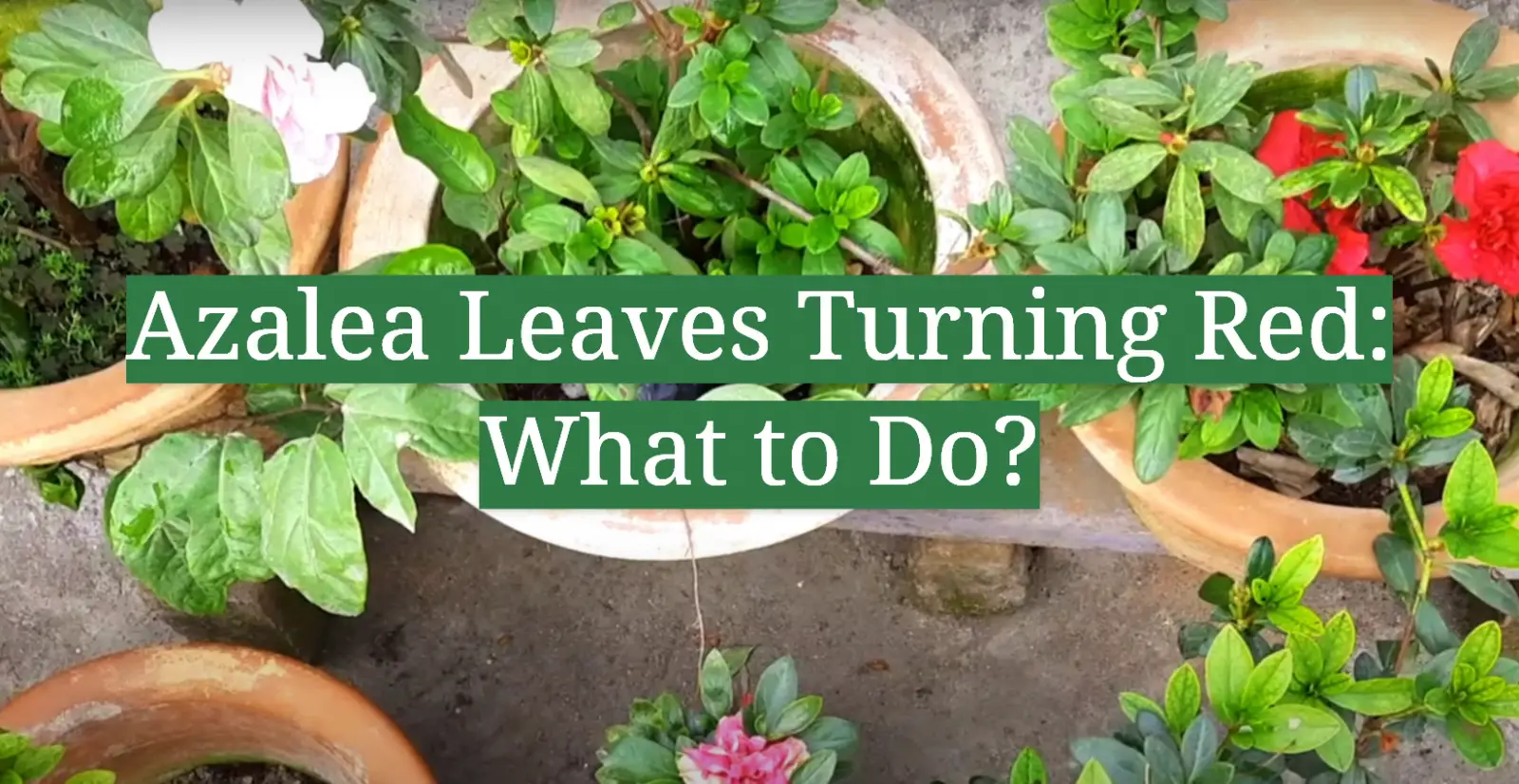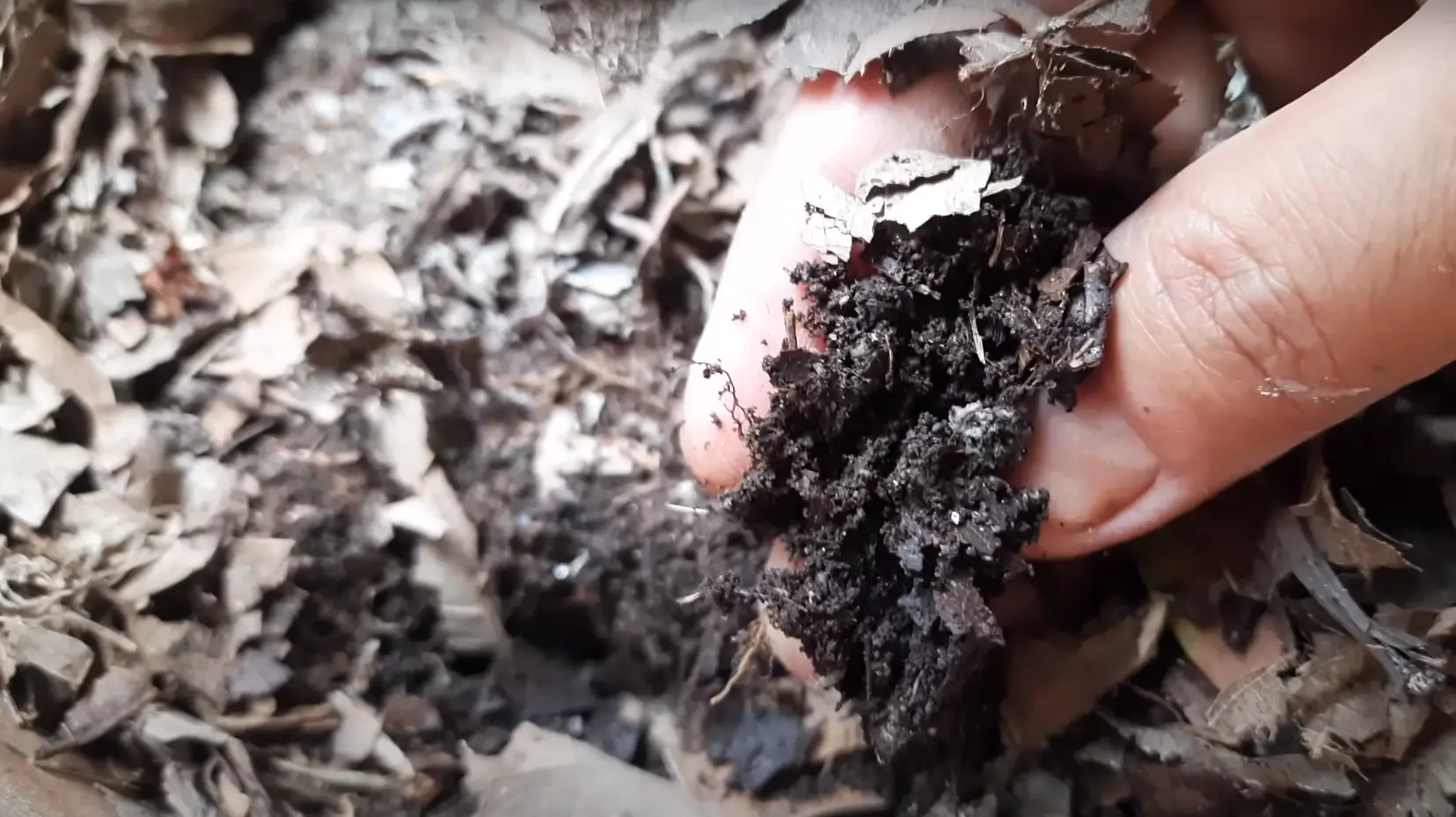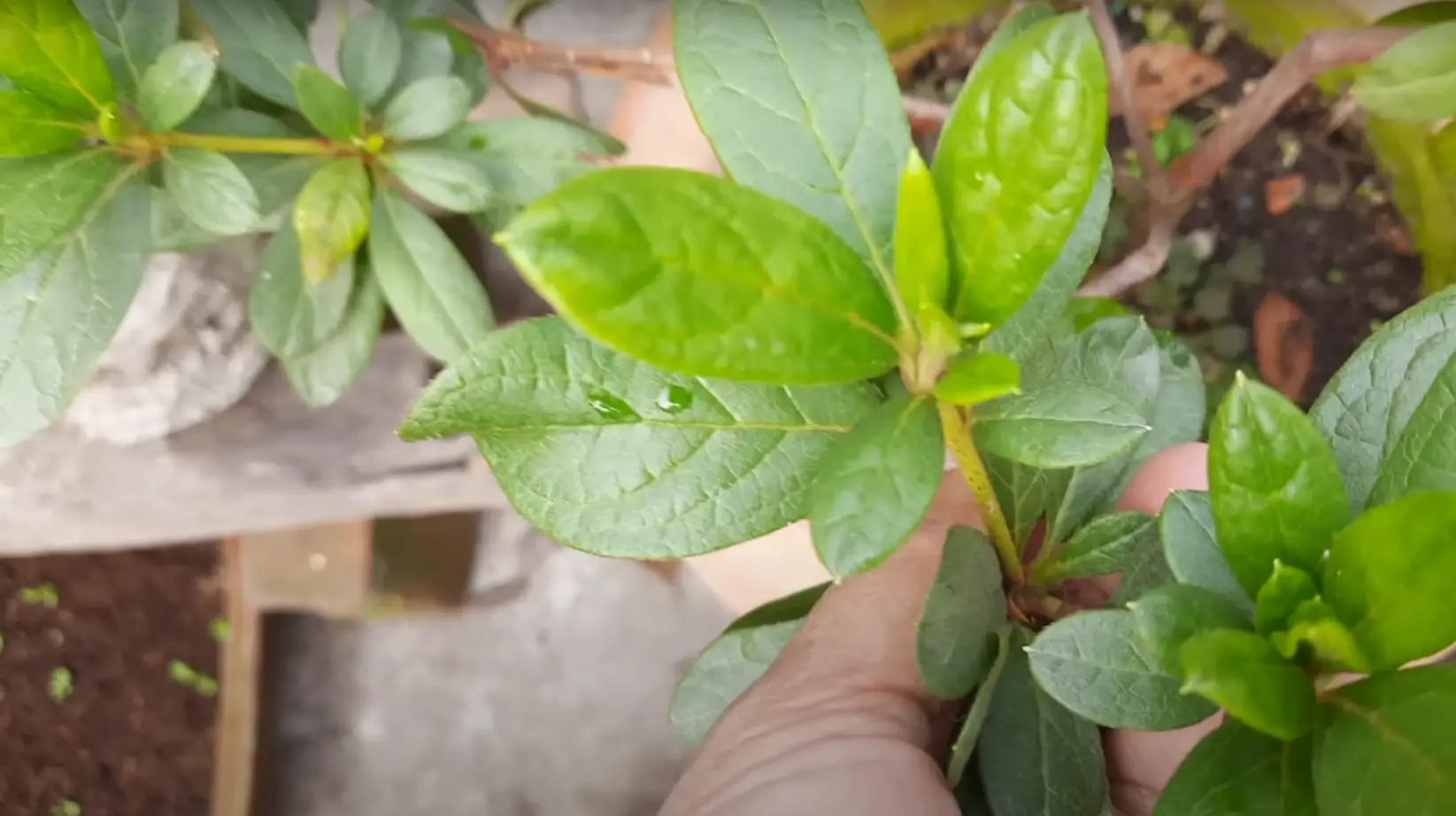Azaleas are incredibly beautiful flowering plants known for their brightly-colored blooms in the spring and summer months. However, when you notice that the leaves on your beloved azalea bush have taken an abrupt turn to red, it can be worrying! Is something wrong? Do I need to act quickly? All these questions are perfectly valid – if you’re feeling concerned about the health of your plant you should definitely take steps towards fixing whatever problems might arise. Here, we provide information regarding why azalea leaves may be turning red and what action should be taken once they start changing colors.
Azalea Leaves Turning Red: Possible Reasons
Stress (Anthocyanins)
Stress is a major cause of red leaves on azaleas. When the plant experiences stress, it releases anthocyanins which are responsible for the red coloring of the leaves. Possible causes of stress include changes in soil chemistry, extreme weather conditions (such as cold and drought) or environmental pollution. The best way to help alleviate this kind of stress is to ensure that your azalea’s environment remains stable, free from any drastic fluctuations in temperature or moisture levels. [1]
Leaf Spot Diseases
Azaleas are susceptible to certain leaf spot diseases, which can cause the leaves to turn red. These diseases can be caused by a number of different fungi and are usually easily identified by their distinctive black spots or circles on the leaves. To help reduce the risk of these diseases, it is important to maintain good sanitation practices around your azalea, such as removing any fallen leaves or branches. In addition, you may want to consider treating your azalea with a fungicide if the problem appears to be getting worse.

Nutrient Deficiency
A lack of certain nutrients in the soil can also cause Azalea leaves to turn red. A common example is iron chlorosis, which is caused by an inadequate level of iron in the soil. To help prevent this problem, you should make sure to regularly fertilize your azalea with a balanced fertilizer that contains all essential macronutrients (nitrogen, phosphorus and potassium). You may also want to consider adding iron chelates or other micronutrient supplements to your fertilizer mix.
Sunlight Overexposure
When azalea leaves start to turn red, one possible explanation is overexposure to sunlight. Azaleas prefer partial shade or dappled sunlight; they can be scorched in direct sun for several hours a day. To avoid sunburn on your azaleas, keep them out of direct sunlight and allow only a few hours of morning sunshine each day. If the plant is already exposed to too much sun, provide it with some extra shade by covering it with canvas fabric or netting until it recovers.
Insufficient Light
If the leaves of your azalea are still green but starting to turn red, it could be an indication that the plant is not receiving enough sunlight. Move it to a location where it gets at least four hours of sun per day. Be sure to choose an area out of direct wind and away from any areas with heavy foot traffic. Too much water can also cause roots to rot in situations where there’s low light, so be sure to water only when necessary.
Spider Mites
Spider mites are a small, pest-like creature that can feed on the foliage of your azalea. They can cause the leaves to turn yellow or red and leave behind webs. If you suspect spider mites may be present, inspect the underside of the leaves for spots or webs. Spider mite infestations can be treated with insecticidal soap, but if there is significant damage it may be best to discard the plant. [2]
Improper Watering
Azaleas require frequent watering on a regular basis. If your azalea leaves are turning red, you may have been under- or over-watering it. When the soil is too wet, oxygen can’t reach the roots and they suffocate, leading to discoloration of foliage. Additionally, too much water can cause root rot which also causes yellowing or reddening of the leaves. To avoid browning from overwatering, make sure there is adequate drainage for your azalea plant and check the soil before you water. Make sure it is dry about one inch down before you give it a thorough watering.
Fungal Diseases
Fungal diseases, such as petal blight and powdery mildew can also cause reddening of azalea leaves. If you notice red patches on the leaves, remove any affected foliage from the plant to prevent further spread. You may also need to treat your plant with a fungicide or systemic fungicide. Make sure you read the instructions for application carefully before using it on your azalea.
How To Fix?
If your azalea leaves are turning red, the causes could range from environmental stressors to disease. Here’s what you can do:
- Check Soil pH: Azaleas prefer an acidic soil with a pH of 5-5.5. Test the soil and adjust if needed.
- Water Correctly: Too much or too little water can cause reddening of the leaves. Make sure that your plant is getting enough water but not sitting in soggy soil for long periods of time.
- Fertilize Properly: Feeding your azalea with an acid-based fertilizer (one with higher levels of iron) twice a year will help keep it vibrant and healthy.
- Improve Air Circulation: Azaleas need plenty of air circulation to help avoid disease and other problems, such as reddening leaves. Prune your azalea to allow for better air flow through the branches.
- Watch For Insects & Diseases: Treat any signs of pests or disease immediately before they cause serious harm to your plant. If you are unsure what is causing the issue, contact a local arborist or university extension office for assistance in identifying and treating the problem.
With proper care, your azalea can recover from its red leaves and thrive once again! Take the time to properly maintain your plant so it can provide years of beauty in your garden or landscape. [3]
Do Azaleas Grow Back?
Azaleas are very resilient and can sometimes grow back after their leaves turn red. However, it’s important to understand the underlying cause of the problem before attempting to revive them. In some cases, the azalea may have suffered from extreme cold or heat stress, a nutrient deficiency, disease, or insects. If that is the case, you will need to address these issues before attempting to bring your azalea back to its former glory.
If the cause of your plant’s red leaves is unknown, there are several steps you can take that may help your azalea recover:
- Move it into an area with partial shade and indirect sunlight
- Water regularly (but do not overwater)
- Prune off any dead or damaged branches
- Add organic matter (such as compost, peat moss, or manure) to the soil to ensure proper drainage
- Apply a balanced fertilizer once every month or two
- Monitor for pests and address them immediately if they are found.
Following these steps should help your azalea recover from its red leaves. However, if it does not improve after a few weeks of care, it is likely that the plant may be beyond saving. In this case, you can start again with a new azalea by following the above steps. With proper care and attention, your new azalea should flourish! [4]
Can Azalea Bushes Be Transplanted?
Yes, it is possible to transplant azalea bushes. However, the best time to do so is during the winter months when the bush is dormant. It is a difficult process and must be done with much care and attention in order to avoid any potential damage or harm to the shrub. Be sure that you have adequate space for the new location, enough water, and well-drained soil. If you decide to move your azalea bush, make sure that you dig up as much of its roots as possible to ensure successful transplanting.
It is important to note that transplanting can cause stress on the shrub, so if you notice its leaves turning red shortly after being moved, don’t panic – this is normal. Give it time to adjust and revive itself in its new environment, and keep up with regular maintenance as outlined above. Once the shrub has become accustomed to its new environment, the red leaves will likely turn green again within a few weeks.
Azalea bushes are strong and resilient plants, but when it comes to transplanting them, caution should be taken as it is a delicate process. Follow the steps and advice outlined in this article for successful care of your azalea bush and to help avoid any potential harm or damage to the shrub. With proper attention and maintenance, you can enjoy your beautiful azalea bush for years to come.
Do Azaleas Have Deep Roots?
Azaleas have shallow roots. They form a mat that is close to the surface of the soil. This allows them to take in nutrients quickly and efficiently, without having to establish deep root systems like other plants. However, this can also make azalea susceptible to drought if not properly watered. The shallow root system can also result in leaves turning red due to stress or lack of water. If your azalea’s leaves are turning red, it may be time to give them some extra attention! [5]
Can Azalea Grow In Shade?
Azaleas are one of the most popular flowering shrubs, but they can be tricky to grow in shade. While azaleas do prefer bright, indirect sunlight, many varieties will tolerate some shade and still bloom. When grown in shade, however, the leaves may turn red or burgundy.
To promote healthy foliage and blooms on your azalea plants in a shaded area, follow these steps:
- Plant your azaleas in an area that gets at least 4 hours of direct sunlight each day. If this isn’t possible, choose a spot with dappled light throughout the day instead of deep shade all the time.
- Fertilize regularly with an acid-tolerant fertilizer. Azaleas need acidic soil, so be sure to use a fertilizer specifically made for acid-loving plants.
- Mulch around your azaleas to help preserve moisture and keep the soil cool in summer months.
- Water regularly during dry spells, making sure not to overwater as this can cause root rot and other problems.
- Prune off any unproductive branches or leaves that are turning red or burgundy instead of green, as this will promote new growth and healthy foliage.
By following these tips, you should be able to enjoy beautiful blooms and deep green foliage from your azalea shrub even if it’s grown in a shaded area!

Does Azalea Need A Lot Of Water?
Azaleas require a lot of water, especially during active growing periods in late spring and summer. During these times, it is important to provide plenty of water for your azalea plants. Additionally, proper drainage is key – make sure the soil around the plant isn’t too wet or soggy. If there is poor drainage, you may need to repot your azalea into a pot with better draining capabilities. A good rule of thumb is to water when the top inch of soil feels dry to the touch. Once established, azaleas can be less finicky about watering but still need regular hydration. In general, one should give their azalea at least an inch of water per week for optimal growth.
If your azalea is turning red and you feel it may be related to a lack of water, immediately start to provide more water for the plant. Make sure the soil has adequate drainage as well. If you find that the plant does not respond positively, then you should investigate other common causes such as disease or environmental stressors. Remember that the sooner an issue is addressed, the better chance your azalea has at bouncing back! [6]
FAQ
Should you worry about Azalea leaves turning red?
It depends on the severity and causes of the red leaves. In some cases, it may be perfectly normal for a mature Azalea to have some red leaves. However, if your plant is otherwise healthy and you notice a large number of red leaves, it could indicate an underlying issue. There are several potential causes of red leaves in Azaleas including nutrient deficiency, extreme temperatures, too much or too little water, and pests or disease. To determine the cause and best solution for treating red Azalea leaves, consult with your local garden center or nursery professional. They can help you identify the problem and provide advice on how to address it.
Can Azalea leaves turning red be prevented?
Sometimes yes—when caused by environmental stressors like temperature, water or soil quality. You can maintain the health of your Azalea with proper care and regular monitoring. Provide a suitable environment for your plant, watering it regularly and feeding it an appropriate fertilizer to ensure adequate nutrition. Additionally, look out for signs of pests or disease on a regular basis so you can address issues quickly when they arise.
How do you treat red Azalea leaves?
The best way to treat red Azalea leaves will depend on the underlying cause. If the problem is due to nutrient deficiency, apply a balanced fertilizer. If extreme temperatures are causing the redness, move your plant indoors or cover it with blankets during colder months. Adjusting watering frequency and amount may also be necessary. If pests or disease are a factor, treat the plant with insecticidal soap or fungicide as needed. Be sure to follow directions and safety precautions when applying any products to your Azalea.
Are there any natural remedies for red leaves in Azaleas?
Yes, some natural remedies may help reverse the effects of environmental stressors on your Azalea’s leaves. For instance, sprinkling Epsom salt around the base of the plant can help prevent nutrient deficiencies. You can also create a DIY insect repellent by mixing neem oil and water in a spray bottle and misting it on your plant every few days. If you’re dealing with fungal issues, try spraying diluted hydrogen peroxide onto the affected areas of the plant.
Can red Azalea leaves be saved?
In some cases, yes. If you catch and address the underlying issue early on, your plant may recover and its leaves may return to their natural color. However, if the problem isn’t dealt with in a timely manner or is too severe, it could lead to irreversible damage and death of your Azalea. Be sure to monitor your plant closely and take action as needed. No matter what the cause of red Azalea leaves may be, it’s important to seek professional advice if you’re unsure about how best to proceed. Consulting a gardening expert can help ensure that you take appropriate measures that will save your plant.
Should you prune red Azalea leaves?
Pruning red Azalea leaves should only be done if absolutely necessary. Pruning can negatively impact the health of your plant. If you are considering pruning, make sure to do it in late winter or early spring. That way, the plant will have as much time as possible to recover and flower again in summer. If you must prune any affected leaves during other seasons, make sure to disinfect your cutting tools with rubbing alcohol or a 1:9 bleach-water solution before making any cuts. Also, avoid over-fertilizing your Azaleas; too much fertilizer can cause foliage discoloration and leaf drop. In addition to pruning, another way to prevent red leaves is through proper watering and fertilizer management. Azaleas prefer moist, but not waterlogged, soil. Fertilize your plant every spring with a light application of an acid-based fertilizer. Too much fertilizer can cause red leaves, so make sure to read the instructions carefully and follow dosage recommendations. Finally, for optimal health, keep your Azalea’s soil pH between 4.0 and 6.0; this is slightly acidic soil that Azaleas need in order to thrive.
Do Azalea Leaves turn red in the fall?
Yes, azalea leaves can turn red in the fall. This is a natural adaptation for some species of azaleas as temperatures drop and days become shorter. The red coloration helps protect the plants from extreme cold weather and can also serve to attract pollinators. However, if your azalea leaves are turning red prematurely or outside of their normal seasonal cycle, this could be an indication of a problem with the plant’s health.
What are the pros and cons of growing azalea leaves?
One of the primary advantages to growing azalea leaves is their vibrant color. Azaleas offer colorful foliage in shades of red, orange, yellow and purple that’s sure to add a beautiful touch to any garden or landscape. Furthermore, these attractive plants are often low-maintenance and easy to care for. On the other hand, azaleas can be more vulnerable to certain diseases and pests than other types of plants. They’re also prone to sudden changes in leaf color, including turning red too quickly or losing their vibrant hue over time – both of which may signal a problem with growth or health. To address this issue, it’s important that you pay close attention to your plant and take measures to prevent any sudden changes in color.
Useful Video: Azalea Care in Pots , Save Dying Azaleas ! How to care for Azaleas ! Azalea potting and fertilizing
Conclusion
In conclusion, azaleas are beautiful, delicate plants with a wide variety of colors and shapes. Unfortunately, sometimes their leaves can turn red due to various environmental factors. If you notice your azalea’s leaves turning red, it is important to take quick action and try to identify the cause so that you can make adjustments accordingly. You may need to provide more water or nutrients, move the plant out of direct sunlight, or reduce the temperature around the plant. By taking these steps, you can help ensure that your azalea stays healthy and vibrant for years to come.
References:
- https://gardenforindoor.com/azalea-leaves-turning-red/
- https://www.theskilledgardener.com/azalea-leaves-turning-red/
- https://rootingforblooms.com/azalea-discoloration-why-your-bush-turns-brown-yellow-white-or-red/
- https://www.growveggy.com/b/azalea-turning-red/
- https://plantcarer.com/azalea-leaves-turning-red/
- https://companionplanting.net/azalea-leaves-turning-red/














Leave a Reply
View Comments